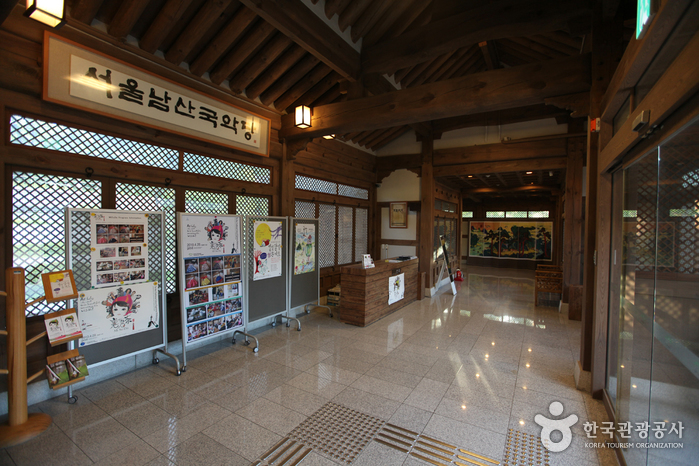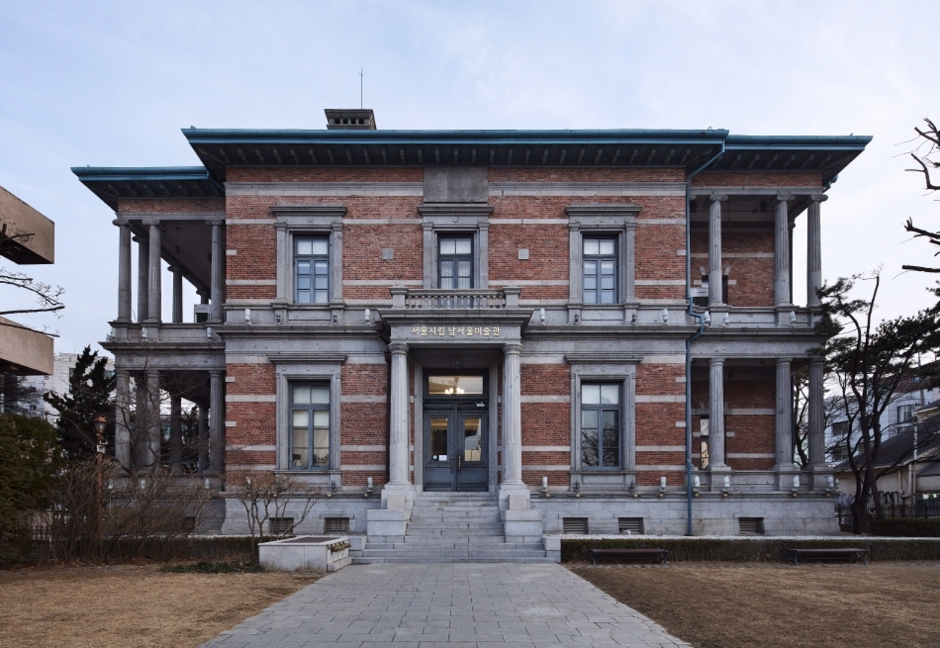Artbox - Wirye Branch [Tax Refund Shop] (아트박스 위례)
8.1Km 2024-04-17
230, Wiryegwangjang-ro, Songpa-gu, Seoul
-
Seoul Namsan Gugakdang (서울 남산국악당)
8.1Km 2021-08-02
28, Toegye-ro 34-gil, Jung-gu, Seoul
+82-2-2261-0500
Seoul Namsan Gukakdang was established by Seoul Metropolitan Government as a representative traditional art-centered performance hall in 2007. It is comprised of one ground and two basement levels. The performance hall is located on the basement floor with 300 seats, equipped with facilities that deliver pansori sounds and gayageum music to every seat. Visitors can make a reservation at the Namsangol Hanok Village website.
Nam-Seoul Museum of Art (SeMA) (서울시립미술관 남서울생활미술관)
8.1Km 2023-10-17
2076, Nambusunhwan-ro, Gwanak-gu, Seoul
+82-2-598-6246
The Nam-Seoul Museum of Art offers visitors a meaningful opportunity to linger beside the traces of history. The building previously served as the Belgian Consulate during the Korean Empire (1897-1910) and has since been designated as a historic Site. It was first constructed in Hoehyeon-dong in 1905 and was relocated to its current location in Namhyeon-dong in 1983. The museum hosts public programs tailored for audiences from various backgrounds in rooms arranged along both sides of a long corridor in the two-story building.
Angyeong Seonsaengnim - Jongno Branch [Tax Refund Shop] (안경선생님 종로)
8.1Km 2024-04-18
1F, 393-1, Jong-ro, Jongno-gu, Seoul
-
CheongKwanJang - Sinseol-dong Branch [Tax Refund Shop] (정관장 신설동점)
8.1Km 2024-06-27
9, Wangsan-ro, Dongdaemun-gu, Seoul
-
![Refurb Stock [Tax Refund Shop] (리퍼브스톡)](http://tong.visitkorea.or.kr/cms/resource/96/3313396_image2_1.jpg)
![189 shop [Tax Refund Shop] (189#(189샵))](http://tong.visitkorea.or.kr/cms/resource/01/3313501_image2_1.jpg)
![Lepitta [Tax Refund Shop] (르피타)](http://tong.visitkorea.or.kr/cms/resource/71/3313871_image2_1.jpg)

![Artbox - Wirye Branch [Tax Refund Shop] (아트박스 위례)](http://tong.visitkorea.or.kr/cms/resource/14/2879514_image2_1.jpg)


![Angyeong Seonsaengnim - Jongno Branch [Tax Refund Shop] (안경선생님 종로)](http://tong.visitkorea.or.kr/cms/resource/90/2878190_image2_1.jpg)
![Mary Jane [Tax Refund Shop] (메리제인)](http://tong.visitkorea.or.kr/cms/resource/33/2878733_image2_1.jpg)
![CheongKwanJang - Sinseol-dong Branch [Tax Refund Shop] (정관장 신설동점)](http://tong.visitkorea.or.kr/cms/resource/38/3313538_image2_1.jpg)
 English
English
 한국어
한국어 日本語
日本語 中文(简体)
中文(简体) Deutsch
Deutsch Français
Français Español
Español Русский
Русский